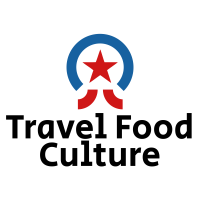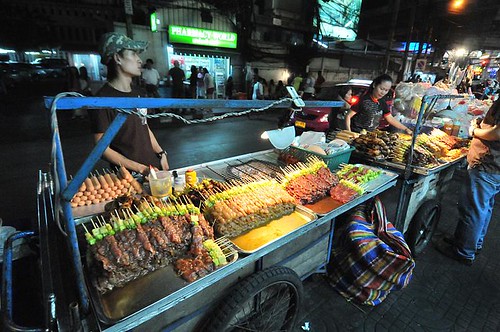Nestled amidst the misty mountains and lush jungles of Northern Thailand, Chiang Mai is a city of contrasts—serene temples standing side by side with buzzing tuk-tuks, monks walking quietly through bustling streets, and modern cafés tucked within ancient Lanna architecture. But once the sun dips below the horizon and the golden glow of day fades into twilight, the city undergoes a transformation that food lovers around the world revere. The ancient walled city turns electric with lantern-lit stalls, sizzling pans, and the scent of spice-infused smoke curling through the air. This is Chiang Mai by night—a paradise for gourmands, a culinary carnival of tastes and textures that comes alive in its legendary night markets. For anyone who has ever savored Thai food, Chiang Mai’s night markets are more than a destination—they are a pilgrimage.
The allure of Chiang Mai’s night markets lies in their authenticity. While many popular tourist destinations around the world have seen their street food scenes polished and curated to appeal to global palates, Chiang Mai remains disarmingly real. Here, street food isn’t a rebranded gourmet movement—it’s a way of life. The vendors, many of whom have been perfecting their recipes for generations, don’t cater to trends—they serve what they love, what they know, and what they believe their ancestors would be proud of. As a result, walking through these markets is a multi-sensory dive into Northern Thai culinary traditions, a journey into a region where every dish is a complex story of spice, season, and soul.
The crown jewel of Chiang Mai’s nocturnal feasts is undoubtedly the Chiang Mai Sunday Walking Street, or Ratchadamnoen Road Market. Beginning at Tha Pae Gate and stretching westward through the heart of the Old City, this market unrolls like a vibrant, aromatic ribbon of sound, scent, and spectacle. While it is a popular tourist attraction, it hasn’t lost its soul. Amidst the crowds and dazzling displays of handicrafts and lanterns, the food stalls are the undisputed stars. Here, you’ll find Sai Ua, the northern Thai sausage, infused with lemongrass, kaffir lime, galangal, and chili—a juicy, smoky delight served hot off the grill.
Right next to it, someone’s grandma is pounding Nam Prik Noom, a green chili dip, in a mortar with such vigor it shakes the table. You’ll spot trays of Khao Soi, that golden curry noodle soup with crispy and soft noodles in harmony, topped with lime, pickled mustard greens, and shallots—perhaps the single most iconic dish of Northern Thai cuisine. And there’s more—sweet sticky rice with ripe mango, grilled bananas glazed in coconut syrup, and cups of Thai milk tea brewed strong and poured with flair. Each stall, each bite, feels like an introduction to someone’s family recipe book.
But Chiang Mai doesn’t rest on Sunday alone. Saturday Walking Street, just south of the Old City along Wualai Road, offers a slightly more relaxed yet equally delectable experience. The road, once known for its silversmiths and artisan workshops, now transforms every weekend evening into a glowing corridor of culinary delight. The air here feels more open, the pace less frantic, and the food no less exciting. One of the highlights here is the grilled river fish, often tilapia, crusted in salt and stuffed with lemongrass and pandan leaves before being charcoal grilled to smoky perfection.
It’s usually served with a side of herb-laden dipping sauce and sticky rice wrapped in banana leaves. Close by, vendors stack bamboo tubes filled with Khao Lam, a sticky rice dessert infused with coconut milk and roasted inside the tube over an open flame. Cracking it open is half the fun; the other half is tasting the soft, smoky, sweet rice within. And if you’re lucky, you might stumble upon a family-run stall preparing Gaeng Hang Lay, a pork belly curry of Burmese origin, rich with tamarind, ginger, garlic, and subtle sweetness—a dish so deep in flavor it deserves a novel of its own.
No exploration of Chiang Mai’s night food scene would be complete without diving into the treasure trove that is the Chang Phuak Gate Night Market, affectionately known as the North Gate Market. This market, more utilitarian and focused than the walking streets, is where you’ll find the locals gathering after work for their regular meals. It’s open every night, and it lacks the tourist-centric crafts and lanterns of the weekend markets, but that’s precisely its charm. Food here is gritty, authentic, unfiltered, and unbelievably good. One of the most famous stalls here is run by a woman in a cowboy hat who serves slow-braised pork leg over rice, or Khao Kha Moo, a dish so deeply savory and melt-in-your-mouth tender that even Anthony Bourdain bowed to its brilliance.
Just a few steps away, bubbling vats of Tom Lek, a spicy pork bone soup, send up plumes of steam that lure in the hungry. Skewers of Moo Ping (grilled pork), trays of Laab Moo (spicy minced pork salad), and towers of fried quail eggs topped with green onions line the area like an edible sculpture garden. And if you fancy something less traditional, you’ll even find stalls offering fusion twists—Thai tacos, wasabi-seasoned squid, and durian-stuffed pancakes.
While the major markets have their charms, some of Chiang Mai’s hidden night food gems are found in smaller, less touristy pockets. The Anusarn Market near the Night Bazaar offers a wide range of seafood options and a chance to sit down and savor grilled prawns, crab curries, and plates of spicy papaya salad (Som Tum) under glowing lights. Malin Plaza, near Chiang Mai University, caters mostly to students, which means low prices and high flavor. It’s here you’ll find delicious grilled chicken wings, Thai-style hot pot, and desserts like tub tim grob—crunchy water chestnuts in coconut milk, dyed red like rubies. For the more adventurous, smaller neighborhood markets like Siri Wattana (Thanin Market) offer culinary deep dives into Lanna cuisine, the traditional food culture of Northern Thailand, including items like jin som (fermented pork), kang hoh (mixed curry), and herbal stews made from foraged greens and mushrooms.
Beyond the food itself, what makes Chiang Mai’s night markets so mesmerizing is the entire experience—the mingling of voices, the clink of chopsticks, the laughter that spills between bites, and the way time seems to slow down under strings of fairy lights and colorful flags. You’re not just eating. You’re participating in a living tradition. You’re connecting with local families, hearing stories in broken English or fluent smiles, and joining a city that welcomes you not through polished menus, but through street-side grills and handwritten signs. Whether you’re navigating the labyrinthine lanes of the Sunday Walking Street or sitting on a plastic stool next to a motorcycle at Chang Phuak Gate, there’s a quiet, unspoken invitation in every bite: “Eat like we eat. Stay as long as you want. This moment is yours.”
In Chiang Mai, the night is not just dark—it’s delicious. It simmers and crackles, it steams and sweetens, and it tells stories in ginger and garlic, coconut and chili, grill marks and drizzles of sweet sauce. For foodies, this city is not merely a place on the map—it is a culinary dream woven into twilight, where each night market becomes a chapter in your personal cookbook of travel memories. So come hungry, come curious, and let the fragrant alleys and glowing stalls of Chiang Mai guide you on one of the most intimate, flavorful journeys your tastebuds will ever take.
Conclusion: The Eternal Aftertaste of Chiang Mai’s Nights
As you walk away from Chiang Mai’s night markets, your stomach delightfully full and your senses reeling from a flurry of flavor, sound, and scent, what lingers long after the final bite is something far more profound than just the memory of good food. It’s the kind of satisfaction that only comes from having shared in something beautifully communal—a living, breathing tradition that transcends tourism, that outlives Instagram posts and food blogs. Because Chiang Mai’s night markets are not merely places to eat; they are nightly celebrations of identity, creativity, and deep cultural continuity. They are the collective pulse of a city that whispers its stories not through monologues or museums, but through sizzling woks, bubbling pots, and bamboo-wrapped treats passed from wrinkled hands with warm smiles.
Each dish you taste under the soft gleam of hanging lanterns tells the story of a region shaped by its geography and heritage—a fusion of Thai, Burmese, Lao, and hill tribe influences. The smoky Sai Ua sausage, with its aromatic blend of herbs, speaks of old spice routes and mountain kitchens. The Khao Soi curry noodles, rich yet delicate, echo a history of cultural exchange that reaches back centuries. The slow-braised pork at North Gate, tender and humble, reminds you of the power of patience and simplicity. Every bite you take is not just a culinary indulgence—it is a conversation with generations, an edible echo of time itself.
But what truly elevates the experience of Chiang Mai’s night food scene is the unmistakable sense of soul. The vendors are not faceless corporations or flashy restaurateurs; they are mothers and grandfathers, artisans and young dreamers—each contributing to an ecosystem where flavor and hospitality are inseparable. They may not all speak English, but their food does the talking, and its message is universally understood: “Come as you are, eat what we love, and for a few baht, be one of us.”
It’s in these lantern-lit lanes and alleys that strangers become fellow diners, where you learn to savor not just the food, but also the act of gathering, observing, and participating. You witness how joy can erupt from a plastic stool and a paper plate, how memories are made not in high-end establishments, but while standing under an awning as a sudden rain shower drizzles around you, munching on grilled squid or sipping spicy soup. There is a magic in the ordinary here, and that’s what makes it unforgettable.
And unlike the fast-paced street food scenes in mega cities like Bangkok or Saigon, Chiang Mai’s markets breathe slower, offering moments to pause, to reflect, and to truly taste—not just what’s on your plate, but what’s all around you. The subtle hush of monks returning from evening prayers, the rustling of fabric as artisans fold handmade scarves, the rhythmic clang of ladles on hot metal—all of these are notes in the symphony that plays out nightly under the Northern Thai sky.
For food travelers, Chiang Mai doesn’t just offer a checklist of dishes to tick off. It gives you a chance to immerse yourself in edible culture, to trace stories of family, hardship, invention, and joy—one delicious bite at a time. Whether it’s your first visit or your fifteenth, the night markets offer something new each time: a dish you hadn’t noticed before, a vendor with a different twist on an old favorite, or simply a renewed appreciation for how food can connect us across borders, languages, and backgrounds.
In the end, Chiang Mai teaches us that the most meaningful meals aren’t those with Michelin stars or multi-course menus—they’re the ones served with open hearts, found in places where you least expect them, and shared in fleeting but unforgettable twilight hours. Long after the lanterns are dimmed and the stalls packed away, the spirit of Chiang Mai’s night markets remains with you, not as a fleeting travel memory, but as a permanent flavor imprinted on your soul.
So if you’re a dreamer, a traveler, a seeker of authenticity—or simply someone who loves food with a story—then Chiang Mai at night isn’t just a stop on your journey. It’s a destination in its own right, a nightly ceremony of taste and tradition that calls you back, again and again, like the lingering aroma of lemongrass in the evening air.
Learn More


